Transcription of 308R-01 Guide to Curing Concrete - Free
1 ACI 308R-01 became effective August 14, 2001, American Concrete rights reserved including rights of reproduction and use in any form or by anymeans, including the making of copies by any photo process, or by electronic ormechanical device, printed, written, or oral, or recording for sound or visual reproduc-tion or for use in any knowledge or retrieval system or device, unless permission inwriting is obtained from the copyright proprietors. ACI Committee Reports, Guides, Standard Practices,and Commentaries are intended for guidance in planning,designing, executing, and inspecting construction. Thisdocument is intended for the use of individuals who arecompetent to evaluate the significance and limitations ofits content and recommendations and who will accept re-sponsibility for the application of the material it American Concrete Institute disclaims any and all re-sponsibility for the stated principles.
2 The Institute shallnot be liable for any loss or damage arising to this document shall not be made in con-tract documents. If items found in this document are de-sired by the Architect/Engineer to be a part of the contractdocuments, they shall be restated in mandatory languagefor incorporation by the Architect/Engineer. 308R-1 Guide to Curing ConcreteACI 308R-01 The term Curing is frequently used to describe the process by whichhydraulic-cement Concrete matures and develops hardened properties overtime as a result of the continued hydration of the cement in the presence ofsufficient water and heat. While all Concrete cures to varying levels ofmaturity with time, the rate at which this development takes place dependson the natural environment surrounding the Concrete , and the measurestaken to modify this environment by limiting the loss of water, heat, or both,from the Concrete , or by externally providing moisture and heat.
3 The word Curing is also used to describe the action taken to maintain moisture andtemperature conditions in a freshly placed cementitious mixture to allowhydraulic-cement hydration and, if applicable, pozzolanic reactions tooccur so that the potential properties of the mixture may develop. Currentcuring techniques are presented; commonly accepted methods, procedures,and materials are described. Methods are given for Curing pavements andother slabs on ground, for structures and buildings, and for mass methods for several specific categories of cement-based productsare discussed in this document. Curing measures, in general, are specifiedin ACI Curing measures directed toward the maintenance of satis-factory Concrete temperature under specific environmental conditions areaddressed in greater detail by Committees 305 and 306 on Hot and ColdWeather Concreting, respectively, and by ACI Committees 301 and : cold weather; Concrete ; Curing ; Curing compound; hot weather con-struction; mass Concrete ; reinforced Concrete ; sealer; shotcrete; 1 Introduction, p.
4 Definition of Curing and the hydration of portland cement Hydration of portland The need for Moisture control and temperature When deliberate Curing procedures are Natural Sequence and timing of Curing steps for When Curing is required for formed When Curing is required: cold and hot Duration of The Curing -affected Concrete properties influenced by curingReported by ACI Committee 308 Don BrognaGene D. Hill, Jr. Aimee PergalskyJoseph Cabrera Edward P. HolubWilliam S. PhelanJames N. Cornell IIR. Doug HootonRobert E. Price Ronald L. DillyKenneth C. Hover*Larry R. RobertsJonathan E. DongellJohn C. HukeyPhillip SmithBen E. EdwardsFrank A.
5 KozeliskiLuke M. SnellDerek FirthJames A. LeeJoel TuckerJerome H. FordDaryl ManuelPatrick M. WatsonSid FreedmanBryant MatherJohn B. WojakowskiGilbert J. Haddad Calvin McCallSamuel B. HelmsH. Celik OzyildirimSteven H. GeblerChairmanCecil L. JonesSecretary* Chair of document subcommittee Deceased308R-2 ACI COMMITTEE REPORTC hapter 2 Curing methods and materials, p. Use of water for Curing Initial Curing Liquid-applied evaporation Final Curing Final Curing measures based on the applicationof Final Curing methods based on moisture retention Termination of Curing Cold-weather protection and Protection against rapid drying in cold Protection against frost Rate of Concrete strength development in Removal of cold-weather Hot-weather protection and Accelerated Minimum Curing Factors influencing required duration of curingChapter 3 Curing for different types of construction, p.
6 Pavements and other slabs on Curing Duration of Buildings, bridges, and other Curing Duration of Mass Methods and duration of Form removal and Curing formed Curing colored Concrete floors and Other constructionsChapter 4 Monitoring Curing and Curing effectiveness, p. Evaluating the environmental conditions in whichthe Concrete is Estimating evaporation Means to verify the application of Quantitative measures of the impact of Curing proce-dures on the immediate Quantitative measures of the impact of Curing proce-dures on moisture and Maturity Measuring physical properties of Concrete affectedby temperature and moisture control to assess curingeffectivenessChapter 5 References, p.
7 Referenced standards and Cited referencesCHAPTER 1 IntroductionThis Guide reviews and describes the state of the art forcuring Concrete and provides guidance for specifying curingprocedures. Curing practices, procedures, materials, andmonitoring methods are described. Although the principlesand practices of Curing discussed in this Guide are applica-ble to all types of Concrete construction, this document doesnot specifically address high-temperature or high-pressureaccelerated Definition of curingThe term Curing is frequently used to describe the processby which hydraulic-cement Concrete matures and developshardened properties over time as a result of the continued hy-dration of the cement in the presence of sufficient water andheat.
8 While all Concrete cures to varying levels of maturitywith time, the rate at which this development takes place de-pends on the natural environment surrounding the concreteand on the measures taken to modify this environment bylimiting the loss of water, heat, or both, from the Concrete , orby externally providing moisture and heat. The term cur-ing is also used to describe the action taken to maintainmoisture and temperature conditions in a freshly placed ce-mentitious mixture to allow hydraulic-cement hydration and,if applicable, pozzolanic reactions to occur so that the poten-tial properties of the mixture may develop (ACI 116R andASTM C 125).
9 (A mixture is properly proportioned and ad-equately cured when the potential properties of the mixtureare achieved and equal or exceed the desired properties ofthe Concrete .) The Curing period is defined as the time periodbeginning at placing, through consolidation and finishing,and extending until the desired Concrete properties have de-veloped. The objectives of Curing are to prevent the loss ofmoisture from Concrete and, when needed, supply additionalmoisture and maintain a favorable Concrete temperature fora sufficient period of time. Proper Curing allows the cemen-titious material within the Concrete to properly hydrate. Hy-dration refers to the chemical and physical changes that takeplace when portland cement reacts with water or participatesin a pozzolanic reaction.
10 Both at depth and near the surface, Curing has a significant influence on the properties of hard-ened Concrete , such as strength, permeability, abrasion resis-tance, volume stability, and resistance to freezing andthawing, and deicing Curing and the hydration of portland Hydration of portland cement Portland cementconcrete is a composite material in which aggregates arebound in a porous matrix of hardened cement paste. At themicroscale, the hardened paste is held together by bondsthat develop between the products of the reaction of cementwith water. Similar products are formed from the reactionsbetween cement, water, and other cementitious cement-water reaction includes both chemical andphysical processes that are collectively known as the hydra-tion of the cement (Taylor 1997).
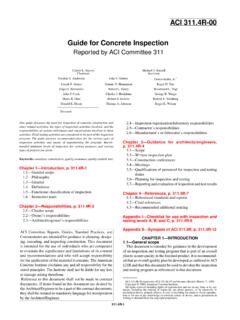
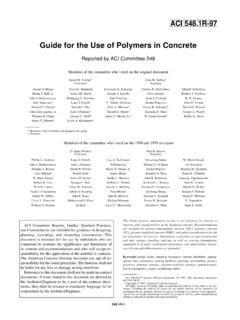
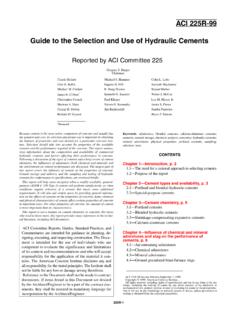


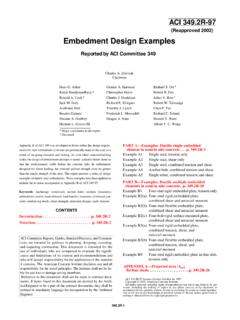

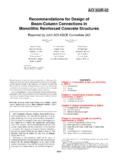
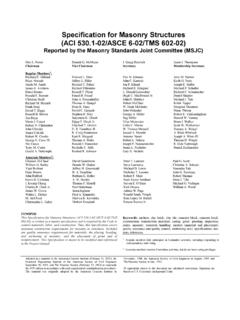
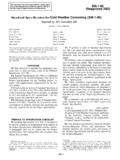
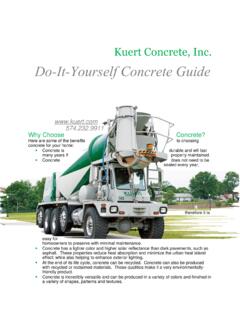
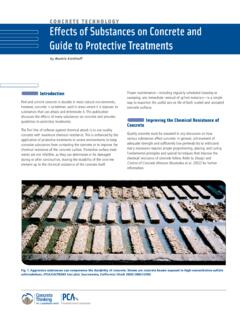
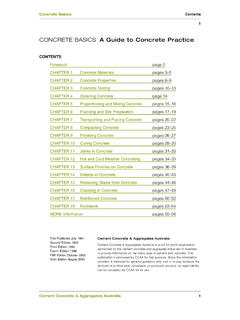
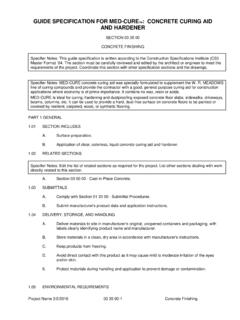
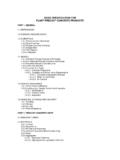

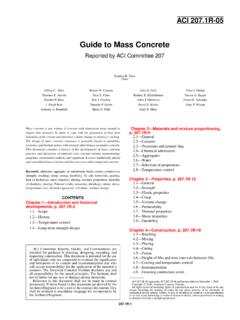
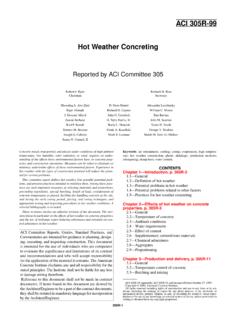
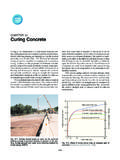
![6ITSVXIH F] %'- 'SQQMXXII - dl.mycivil.ir](/cache/preview/4/b/b/f/2/e/8/1/thumb-4bbf2e81b2b2df04c22714e49f0954ce.jpg)